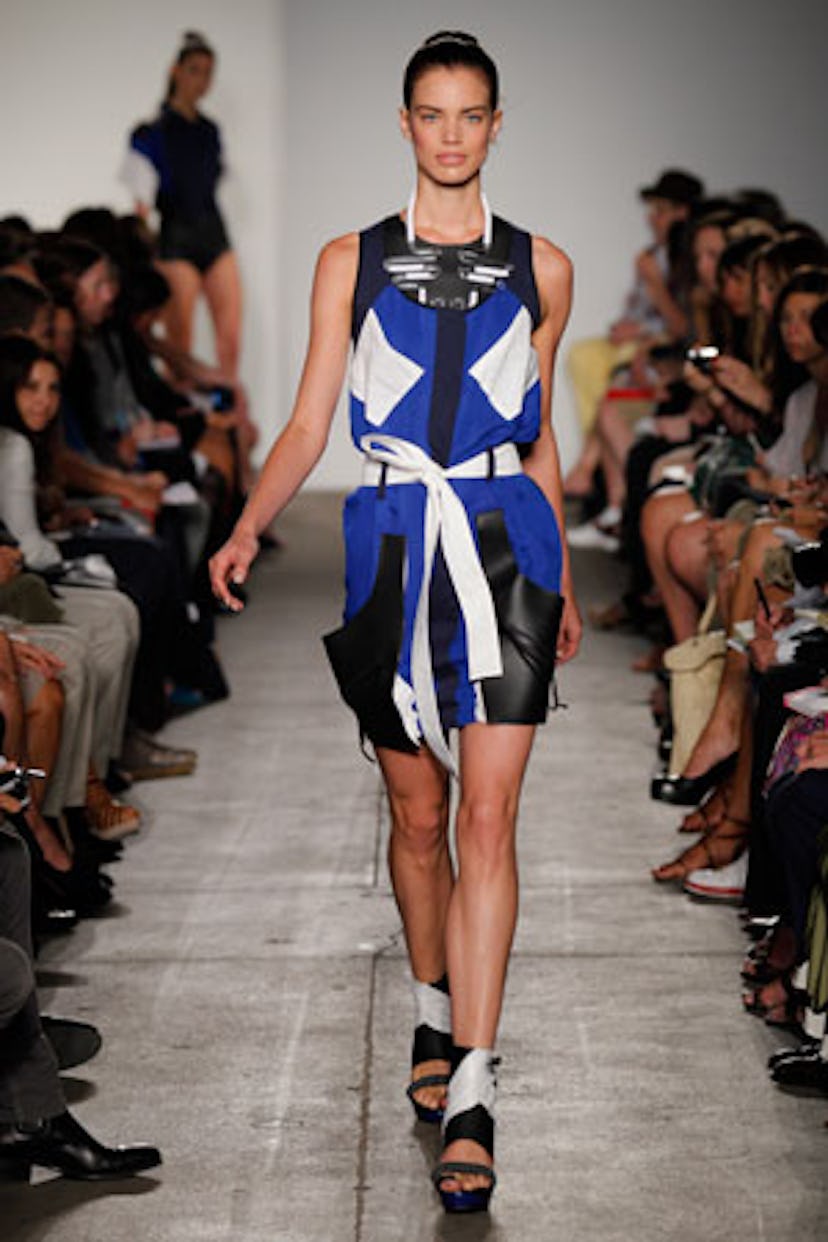When Art Inspires Fashion
Ohne Titel, spring 2011 Viewing the spring/summer 2011 collections, particularly in New York and London, it was hard to miss the influx of artists as inspiration. Ohne Titel drew on the work of 19th...

Viewing the spring/summer 2011 collections, particularly in New York and London, it was hard to miss the influx of artists as inspiration. Ohne Titel drew on the work of 19th Century Japanese woodblock artist, Utagawa Kuniyoshi, to create their sleek Alaia-meets-scuba wares; Richard Nicoll teamed up with renegade collage and performance artist Linder Sterling yet again on prints; Yohji Yamamoto paid homage to Yoko Ono’s notorious text pieces through unisex tees for Y-3; and Mary Katrantzou’s idiosyncratically technical print-driven dresses were inspired by Renee Margritte and Surrealism in general.
Also taking direction from the art world, Scott Sternberg’s Band of Outsiders/Boy presentation featured a nostalgic, summery backdrop bringing to mind past eras-a reaction to Sternberg’s inspiration this season, the photographs of luminary American photographer, Paul Outerbridge, renowned for his ground-breaking images from the 1930s. “I guess I was intrigued by how modern and fresh Outerbridge’s images felt, despite the subject matter and era in which they were shot,” explained Sternberg. Outerbridge, a photographer revered for his avant-garde and irreverent perspective and experimental approach, is best known today for his meticulous still life images-an example of which is Beach Equipment from 1936, an image that particularly inspired Sternberg. “Everything from the warm color palette to the rattan picnic basket from Beach Equipment made it’s way into the fabrics and overall mood of the collection,” he revealed. “For the presentation, we were in the 30s, inside of a Paul Outerbridge photograph. I personally find tons of inspiration in art and from individual artists, as I’m sure many other designers do–perhaps because art and fashion both intersect and diverge across so many levels.”